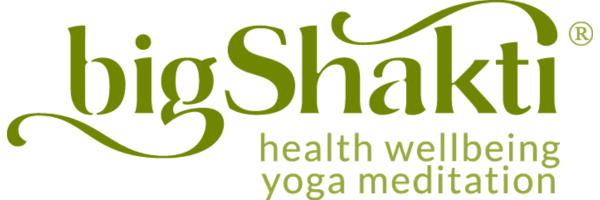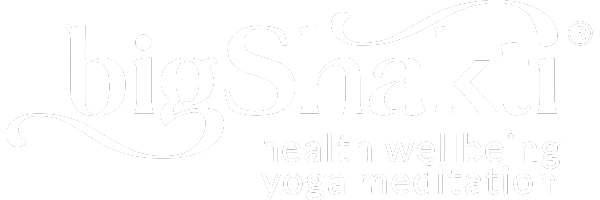Yoga of Mental Health Workshops → More Info
3 Easy Steps to Deep Relaxation - Guided Yoga and Meditation Training
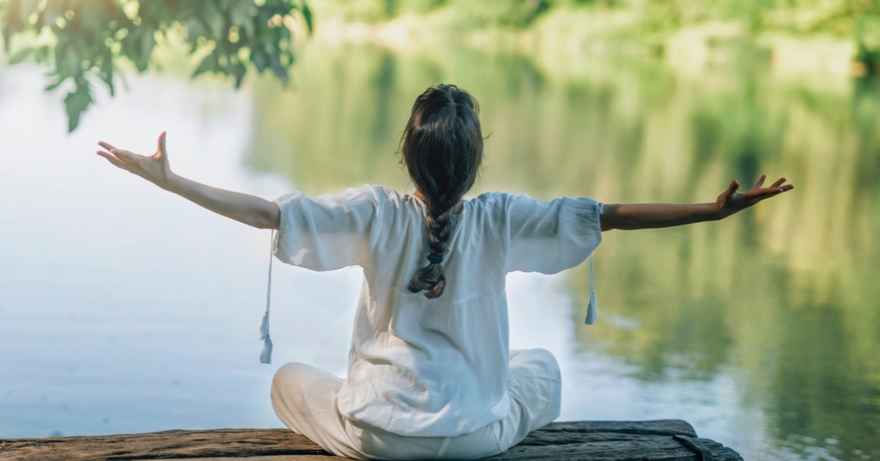
Achieving a state of deep relaxation has become more essential than ever. Our minds and bodies are constantly bombarded with stress, tension, and the relentless demands of daily life, leading to exhaustion and a host of health issues. Deep relaxation is not just about taking a break; it's about reaching a profound state of tranquillity where both mind and body can heal, rejuvenate, and restore their natural balance.
Meditation is a powerful tool to achieve this deep state of relaxation. It allows you to disconnect from the chaotic external environment and tune into your inner self, fostering a sense of peace and well-being. Through meditation, you can learn to let go of worries, reduce stress, and experience a sense of calm and clarity that permeates your entire being.
Deep relaxation and meditation involve systematic techniques that help you release physical and mental tension, enhance your focus, and boost your overall health. By incorporating these practices into your daily routine, you not only improve your mood and productivity but also enhance your ability to cope with life's challenges more effectively.
Our guided yoga and meditation series, The 3 Easy Steps to Deep Relaxation, offers a comprehensive approach to achieving this state of deep relaxation. Designed to be accessible and easy to follow, this series will lead you through a progressive journey of relaxation, helping you to unwind, de-stress, and recharge your energy levels. Whether you're a beginner or an experienced meditator, these techniques will help you cultivate a more relaxed, balanced, and fulfilling life.
What is deep relaxation?
Deep relaxation is a state of mind and body achieved when you are free from stress and tension. It's a state of complete relaxation that allows you to let go of your worries and feel a sense of calm and tranquility. Relaxation is an altered state, an antidote to the constant energy-draining demands of our busy waking existence.
The benefits of deep relaxation are numerous. The guided meditations systematically guide you to achieve these benefits simply and effectively.
By following the three steps, you not only reduce stress but also lower blood pressure, boost the immune system, and gain deeper and more refreshing sleep. The three steps support good health, develop clarity of mind, and improve concentration and memory. They also improve your mood, increase your productivity, and enhance your overall well-being.
Other benefits of deep relaxation
Deep relaxation is a state where the mind and body are free from stress and tension, leading to numerous physical, mental, and emotional benefits. It's a powerful tool for anyone looking to de-stress and unwind, regardless of their circumstances.
One of the most significant benefits is that it's especially valuable for students studying for exams, those who are short on sleep, trying to meet deadlines, and people recuperating from illness or surgery.
Here are some of the key advantages to achieving a state of deep relaxation:
Physical Benefits of Deep Relaxation
- Reduced Stress and Anxiety: Deep relaxation techniques help lower cortisol levels, the stress hormone, thereby reducing overall stress and anxiety.
- Lower Blood Pressure: Regular practice of relaxation techniques can help lower blood pressure, reducing the risk of heart disease and stroke.
- Improved Sleep: Deep relaxation promotes better sleep quality by calming the mind and reducing the physiological arousal that can interfere with sleep.
- Enhanced Immune Function: Relaxation boosts the immune system by reducing stress-induced suppression, helping the body to fight off infections and diseases more effectively.
- Pain Relief: Techniques such as progressive muscle relaxation and meditation can help alleviate chronic pain by reducing muscle tension and altering pain perception.
- Better Digestion: Relaxation activates the parasympathetic nervous system, aiding digestion and nutrient absorption.
- Increased Energy Levels: Deep relaxation can help increase overall energy and vitality by reducing stress and promoting restful sleep.
Mental Benefits of Deep Relaxation
- Improved Concentration and Memory: Deep relaxation techniques can enhance cognitive functions such as concentration, memory, and problem-solving abilities.
- Greater Emotional Stability: Relaxation helps to regulate emotions, making it easier to manage stress and respond calmly to challenging situations.
- Enhanced Creativity: A relaxed mind is more open to new ideas and creative thinking, making it easier to find innovative solutions to problems.
- Mental Clarity: Deep relaxation clears mental clutter, leading to better decision-making and increased mental clarity.
Emotional Benefits of Deep Relaxation
- Improved Mood: Regular practice of relaxation techniques can lead to a more positive mood and outlook on life.
- Reduced Symptoms of Depression: Relaxation can help alleviate symptoms of depression by increasing levels of serotonin and other mood-enhancing neurotransmitters.
- Greater Sense of Well-Being: Achieving a state of deep relaxation promotes a sense of peace, tranquility, and overall well-being.
- Enhanced Self-Awareness: Relaxation techniques such as meditation foster a deeper connection with oneself, promoting greater self-awareness and insight.
Long-Term Benefits of Deep Relaxation
- Improved Resilience: Regular deep relaxation practice builds resilience, making it easier to cope with life's challenges and bounce back from adversity.
- Prevention of Chronic Diseases: By reducing stress and its associated risks, deep relaxation can help prevent chronic diseases such as heart disease, diabetes, and hypertension.
- Slower Aging Process: Deep relaxation can slow down the aging process by reducing oxidative stress and inflammation, leading to a healthier, more youthful body and mind.
The benefits of deep relaxation extend far beyond just feeling calm and stress-free. By incorporating relaxation techniques into your daily routine, you can experience profound improvements in your physical health, mental clarity, emotional stability, and overall quality of life. Whether you are dealing with stress, seeking better sleep, or enhancing your well-being, deep relaxation offers a simple and effective solution to achieve these goals.
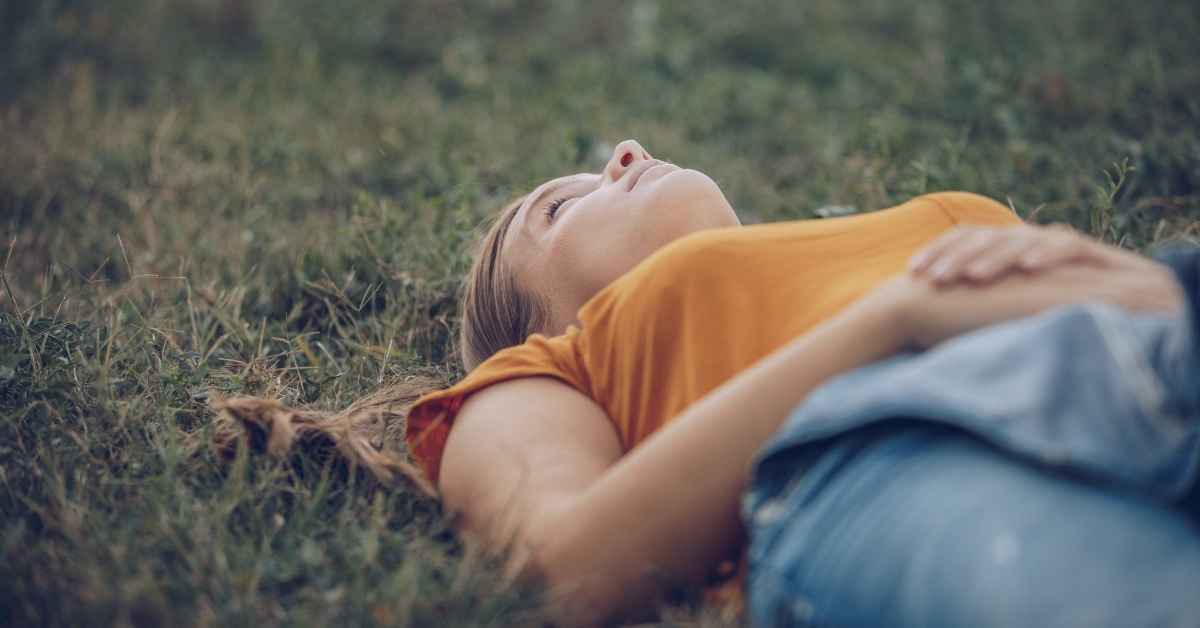
How Meditation Helps One Achieve Deep Relaxation
Meditation is a powerful practice that helps individuals achieve deep relaxation by calming the mind, reducing stress, and promoting overall well-being.
Here are the ways in which meditation facilitates deep relaxation:
1. Reduction of Stress and Anxiety
Meditation helps lower cortisol levels, the body's primary stress hormone. Focusing on the breath or a specific object encourages the mind to let go of worries and anxieties. This shift from a stress-response state to a relaxed state allows the body to recover and rejuvenate.
2. Activation of the Parasympathetic Nervous System
Meditation activates the parasympathetic nervous system, which is responsible for the body's 'rest and digest' functions. This activation counteracts the 'fight or flight' response driven by the sympathetic nervous system, leading to reduced heart rate, lower blood pressure, and a sense of calm.
3. Improved Breathing
Meditation often involves deep, mindful breathing, which enhances oxygen flow to the brain and body. Controlled breathing techniques help to slow down the breath, which in turn slows the heart rate and relaxes the muscles. This promotes a state of deep relaxation.
4. Enhanced Focus and Mindfulness
Meditation reduces the impact of negative thoughts and distractions by training the mind to focus on the present moment. This mindfulness practice helps individuals stay grounded and present, reducing mental clutter and promoting mental clarity and relaxation.
5. Release of Physical Tension
Meditation practices such as body scanning involve systematically relaxing different body parts. This helps to identify and release physical tension accumulated due to stress or poor posture, leading to overall physical relaxation.
6. Improved Sleep Quality
Regular meditation practice can improve sleep quality by calming the mind and reducing the physiological arousal that can interfere with sleep. Better sleep contributes to overall relaxation and well-being.
7. Emotional Regulation
Meditation helps in regulating emotions by promoting a balanced and positive mental state. By observing thoughts and emotions without judgment, individuals can manage their emotional responses better, leading to a calmer and more relaxed state of mind.
8. Increased Self-Awareness
Meditation fosters greater self-awareness, allowing individuals to recognize and address sources of stress and tension in their lives. This awareness helps you develop healthier coping mechanisms and achieve a state of deep relaxation.
6 Meditation Techniques for Deep Relaxation
1. Mindfulness Meditation
This technique involves focusing on the present moment and observing thoughts and sensations without judgment. It helps to reduce stress and promote relaxation by bringing attention to the here and now.
2. Breath Awareness Meditation
Focusing on the breath and observing its natural flow helps to calm the mind and body. Techniques such as deep breathing and controlled breathing can further enhance relaxation.
3. Body Scan Meditation
This technique involves mentally scanning the body from head to toe, noticing areas of tension, and consciously relaxing each part. It is effective in releasing physical and mental stress.
4. Guided Meditation
Guided meditations, often available as audio recordings, lead individuals through a series of visualizations and relaxation techniques. This can be particularly helpful for beginners.
5. Mantra Meditation
Repeating a calming word or phrase (mantra) can help focus the mind and reduce distractions, promoting a deep sense of relaxation.
6. Loving-Kindness Meditation
This practice involves generating feelings of compassion and love towards oneself and others. It can reduce stress and promote emotional well-being.
Meditation is a versatile and effective tool for achieving deep relaxation. By reducing stress, enhancing focus, and promoting physical and emotional well-being, meditation helps individuals cultivate a state of deep relaxation that supports overall health and quality of life. Whether through mindfulness, breath awareness, body scans, or guided sessions, meditation offers a pathway to tranquility and rejuvenation.
At Big Shakti, we offer The 3 Easy Steps to Deep Relaxation Guided Yoga and Meditation Series. It is the perfect solution for anyone looking to achieve deep relaxation simply and effectively. It's also great if you prefer to relax in the comfort of your own home or office.
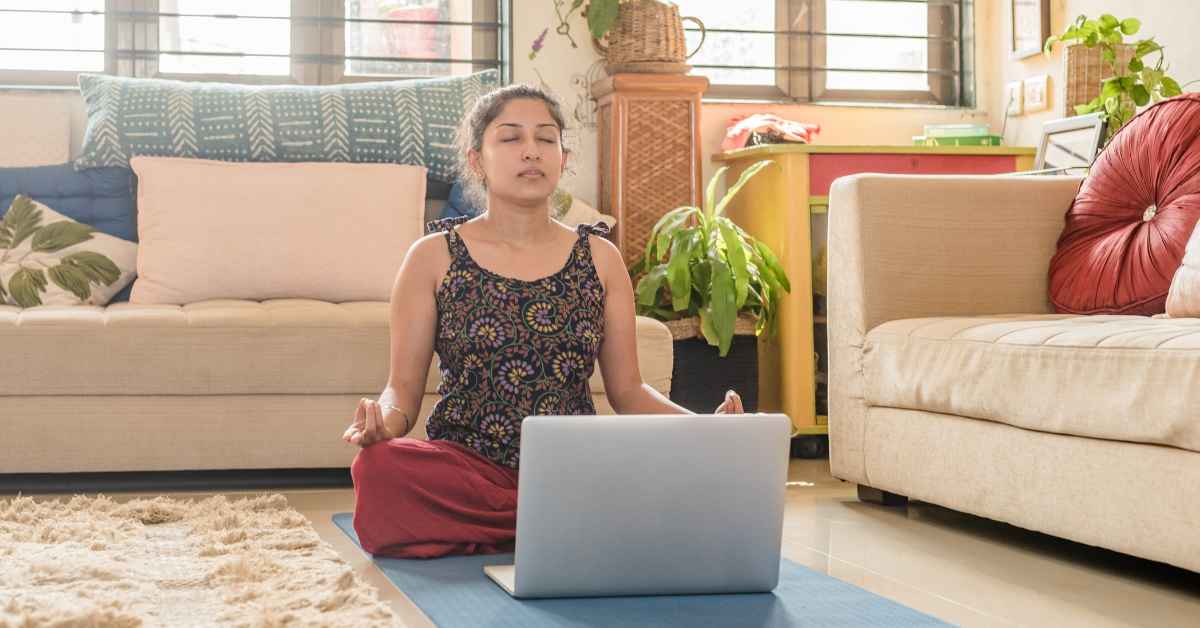
How the 3 Easy Steps To Deep Relaxation Meditation Series works
This series of yoga meditations is an excellent gift for those who have never meditated before but want a simple way to relax and recharge. It requires no prior meditation experience, making it perfect for anyone looking to improve their overall well-being.
For even more complete training on how to relax and restore energy and vitality, purchase our Yoga and Meditation Course.
This guided yoga and meditation series is a simple and effective process. The techniques included in our MP3 series can be practiced anytime, anywhere, allowing you to rest deeply, calm yourself, and replenish your energy. Over time, you will become a more relaxed and expressive person, improving your overall well-being and quality of life.
For a limited time only, use the coupon code Relax20 in the cart or checkout for a 20% discount.
The Three Easy Steps to Deep Relaxation series consists of five tracks, an introductory lecture, three audio tracks that describe the three steps to achieve deep relaxation, and a short lying relaxation technique. The tracks are designed to be listened to in sequence, with each one building on the previous one to help you reach a state of complete relaxation.
By breaking the process of relaxation into small steps, you learn various important skills that enable you to relax in any situation. At the same time, each step takes you progressively deeper into relaxation, turning off the negative effects of stress, anxiety, and overthinking and soothing your body and mind.
Meditation Track 1 – Talk on Relaxation Meditation.
The first track, Talk on Relaxation, introduces the series and describes how relaxation is a simple skill that anyone can learn to turn on the relaxation response to create deep rest, vitality, health, calm, and true inner peace.
Once learned, it is the perfect antidote to the stresses and endless demands of life, which inhibit the body’s natural capacity to relax and lead to fatigue and exhaustion, which in turn leads to illness.
Relaxation meditation is a process that enables you to achieve a state of deep relaxation and calmness by focusing on your breath or a specific object and letting go of any distracting thoughts or sensations.
During relaxation meditation, you may use techniques such as deep breathing, progressive muscle relaxation, or visualization to help release tension in your body and calm your mind. The goal is to enter a state of deep relaxation, an altered state that can have numerous physical and mental health benefits, such as reducing stress and anxiety, improving sleep, and promoting overall well-being.
Meditation Track 2 – Step 1 - Body Scanning
The second track is Body Scanning. Body scanning meditation is a mindfulness technique that involves bringing awareness to different body parts and noticing any sensations, tensions, or discomfort that may be present. It is often used as a relaxation exercise to release physical tension and promote a sense of calm and well-being. It can also help you to become more mindful and present in your daily life as you become more attuned to your body and the sensations it is experiencing.
When you go about your daily life, you accumulate physical and mental tension without even realizing it. These tensions manifest in your body as tight muscles, knots, and restricted movement. The problem is that if you don't become aware of these tensions, they can become chronic and even cause physical pain.
One way to overcome this is to practice body scanning. Body scanning meditation can also be a helpful tool for reducing stress, anxiety, and physical discomfort.
Body scanning is a technique where you systematically focus your attention on different parts of your body. For example, you might start at the top of your head and move your awareness down to your toes. As you focus your attention on each area, you notice any sensations or tensions that you are holding. By doing so, you become more aware of your body, which allows you to identify and release any built-up tensions. For example, you may notice a tightness in your shoulders that you weren't aware of before, and simply acknowledging it and focusing on that area enables you to release that tension to some degree.
It can be practiced on its own or as part of a larger mindfulness or meditation practice and can be adapted to fit your individual needs and preferences.
Meditation Track 3 – Step 2 – The Spontaneous Breath
The second track, The Spontaneous Breath, is a technique that involves bringing attention and awareness to the breath as it flows in and out of the body. It is a form of mindfulness meditation that can help you cultivate a sense of calm and relaxation, reduce stress and anxiety, and increase your ability to focus and concentrate.
During breath awareness, you typically sit in a comfortable and upright position, either on a cushion or chair, with your eyes closed or slightly open. You then begin to bring your attention to the sensation of the breath as it enters and exits the body, noticing the rise and fall of the chest or belly, the sensation of the air passing through the nostrils, or any other physical sensations associated with the breath.
As thoughts, feelings, or distractions arise, you simply observe them without judgment or attachment and gently bring your attention back to the breath. This process of noticing and refocusing attention on the breath can also support you in letting go of distractions, remaining present in the moment, and, as a result, calming your thoughts and emotions,
Breath awareness meditation can be practiced for just a few minutes a day or for longer periods of time, depending on your preferences and needs. It can be done on its own or as part of a larger mindfulness or meditation practice and can be adapted to fit the needs of each individual.
Meditation Track 4 – Step 3 – The Controlled Breath
The third track, The Controlled Breath, is a guided yoga and meditation technique that takes you on a journey to a state of complete relaxation. This track is designed to help you let go of your worries, release tension from your body, and find a sense of peace and tranquility.
Controlled breath meditation is a technique in which you intentionally lengthen and regulate your breath to create a sense of calm and relaxation. This technique can be practiced in different ways, including counting the length of the breath or using a mantra.
Counting the length of the breath involves focusing on the inhalation and exhalation of the breath and counting the duration of each breath. For example, you may count to four as you inhale, hold your breath for a count of four, and then exhale for a count of four. This technique helps to slow down the breath and create a sense of relaxation.
Using a mantra involves repeating a word or phrase, either silently or out loud, as individuals inhale and exhale. You can use a simple word such as "peace" or "calm" or a phrase such as "I am relaxed and at ease." However, the repetition of a mantra is superior to a word as it acts at a deeper level and supports deeper states of relaxation and meditation.
Controlled breath meditation powerfully reduces stress and anxiety and promotes relaxation and well-being. It can be practiced on its own or as part of a larger mindfulness or meditation practice.
Meditation Track 5 – Lying relaxation
A short lying relaxation meditation is included in the series. It is a special form of meditation in which you move your awareness from one part of your body to another in a specially designed sequence that induces complete relaxation of the whole physical body.
This technique involves lying down in a comfortable position, either on the floor or on a bed, and allowing the body and mind to rest and rejuvenate.
Relaxation meditations can be practiced in the lying position
It's worth mentioning that the relaxation meditations included in The 3 Easy Steps to Deep Relaxation Guided Yoga and Meditation Series can be practiced in the lying position. This makes them even more accessible and comfortable for anyone looking to achieve deep relaxation. However, it is a good idea to practice the techniques while lying and also when you are seated so that you can use them in your daily life.

The perfect meditation solution for deep relaxation
Are you feeling stressed, anxious, or just can't seem to relax?
Would you like to gain the same deep rest and the other benefits of taking a short holiday with just 20 minutes of relaxation meditation?
Look no further because our guided yoga and meditation series, The 3 Easy Steps to Deep Relaxation Guided Yoga and Meditation Series, can help you.
Of course, relaxation meditation doesn't replace the need for a holiday. However, the more relaxed you are when you go on holiday, the more you can enjoy it. Regular short bursts of relaxation on a daily basis decrease stored tensions and increase your relaxation bank account. You have more energy, can recuperate from stress faster, and can prevent the negative effects of stress, which can include serious chronic illness.
Every time you practice one of our meditations, you are taking time out of a busy, stressful life to go within and restore your energy. It's like taking a short holiday every day.
Our guided, progressive relaxation meditation techniques offer you a simple and effective solution to achieve deep relaxation in just three easy steps. They take you deeper and deeper into relaxation to de-stress, unwind, and achieve a sense of calm in your busy life.
Our MP3 series is also affordable. A one-time purchase gives you access to the five audio tracks, which you can listen to anytime, anywhere.
Additionally, relaxation meditation is backed by science. Studies have shown that mindfulness meditation and relaxation techniques can reduce stress, lower blood pressure, and improve sleep. The MP3s incorporate both of these techniques, making them a powerful tool for improving your overall well-being.
In conclusion, The 3 Easy Steps to Deep Relaxation Guided Yoga and Meditation Series is a simple and effective solution for anyone looking to de-stress and unwind. It's affordable, easy to use, and backed by science. Try it today and start experiencing the benefits of deep relaxation.
Categories
- Yoga (13)
- Yoga Tantra (20)
- Meditation (23)
- Meditation Techniques (31)
- Ayurveda (3)
- Carl Jung (5)
- Chakras (14)
- Consciousness (17)
- Diseases (7)
- e-mag (9)
- Everyday Wisdom (6)
- Life Purpose (8)
- Mantras (18)
- Mental Wellness (44)
- Podcast (23)
- Prana - The subtle breath (14)
- Relaxation (18)
- Shadow Self (7)
- Spirituality (12)
- Symbols (2)
- Third Eye - Ajna Chakra (7)
- Wisdom (2)
- Yoga Nidra (12)
- Yoga Philosophy (16)
- Yoga Psychology (19)
- Yoga Therapy (41)
- Yoga Meditation Research (3)
- Articles by Jayne Stevenson (14)
- Articles by Swami Shankardev (25)
- Stress Management (11)
- Emotion (3)
- Self-Awareness (1)
- Self-Regulation (1)
- Healing (3)
2025 Yoga of Mental Health Workshops
- Sāṁkhya Philosophy & Mental Health: A Yogic Path to Holistic Well-being
- Uncovering the Roots of Mental Illness: Insights from the Gita & Patanjali
- Restoring Self-Regulation: Yogic Techniques for Emotional Resilience & Inner Strength
- Mantra Therapy: Transforming Thought Patterns for Emotional Healing & Mental Wellbeing
